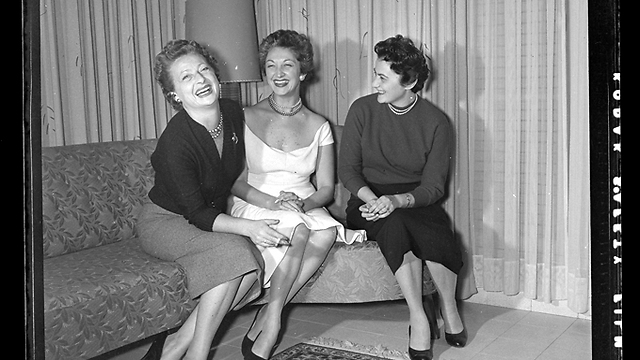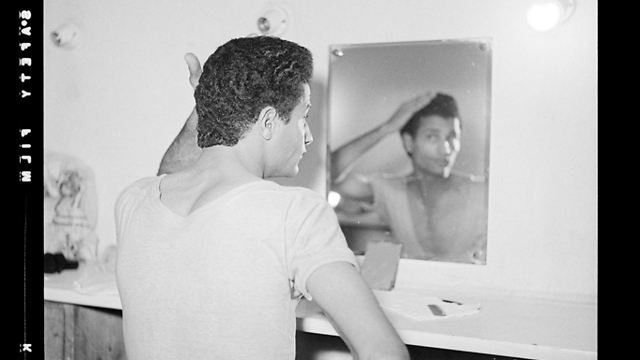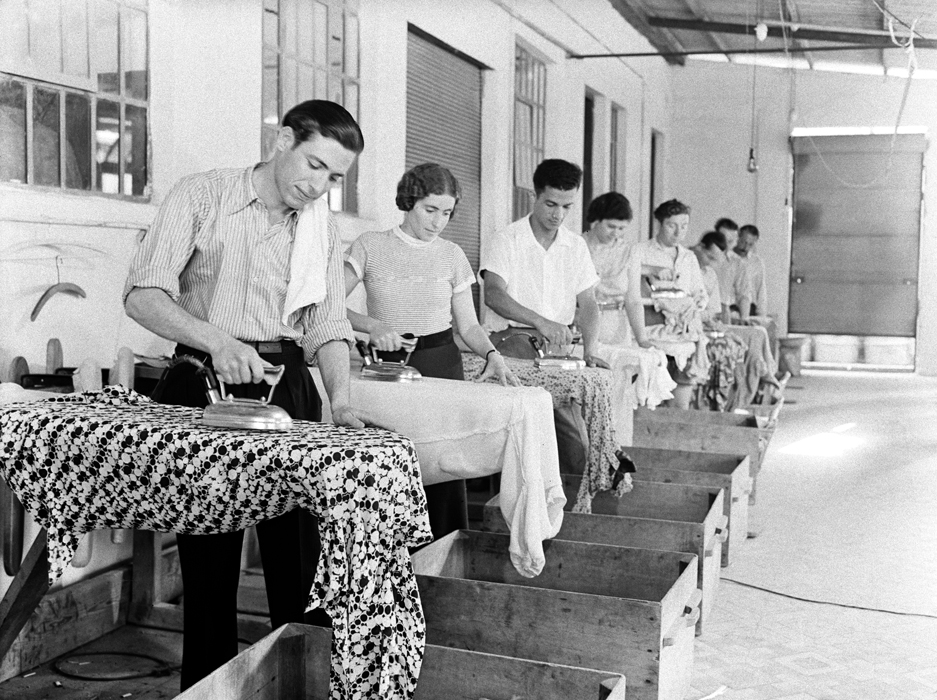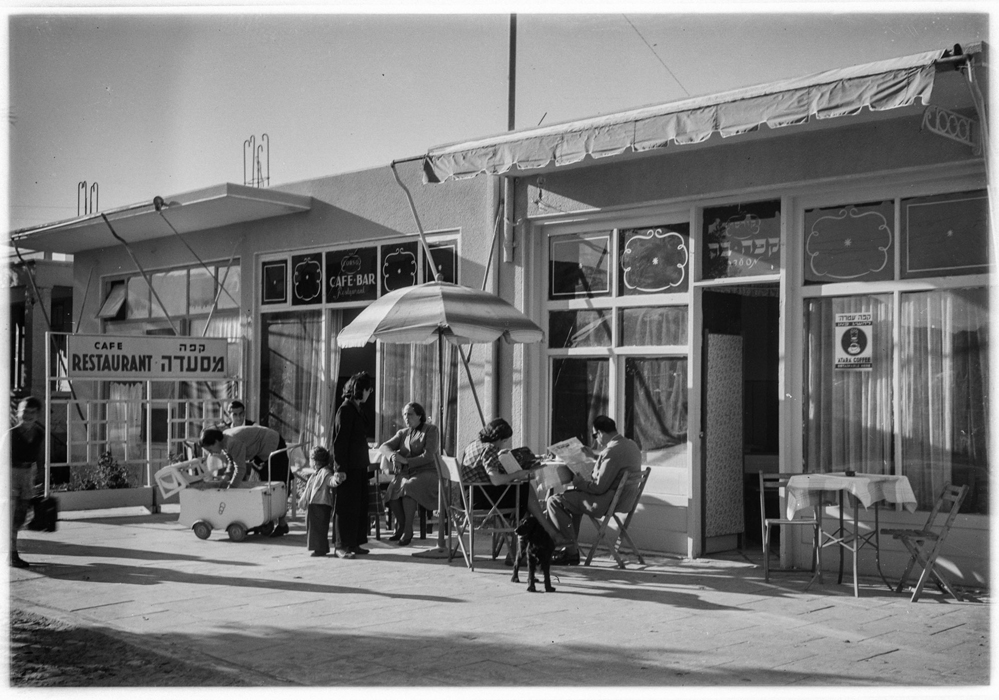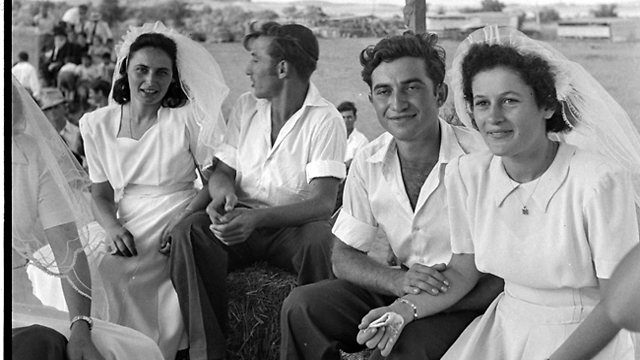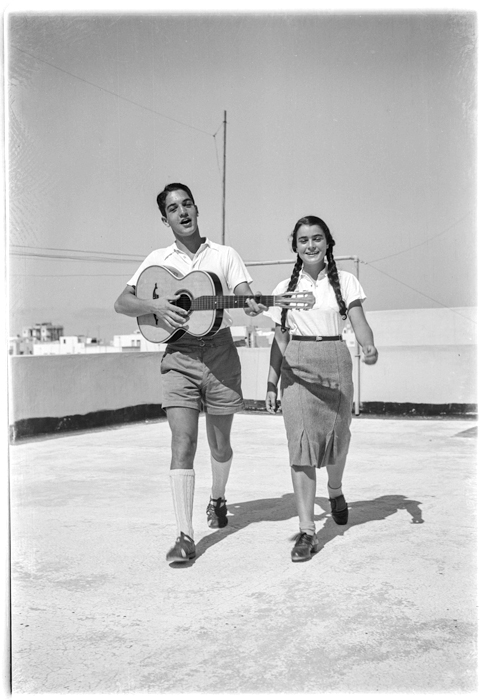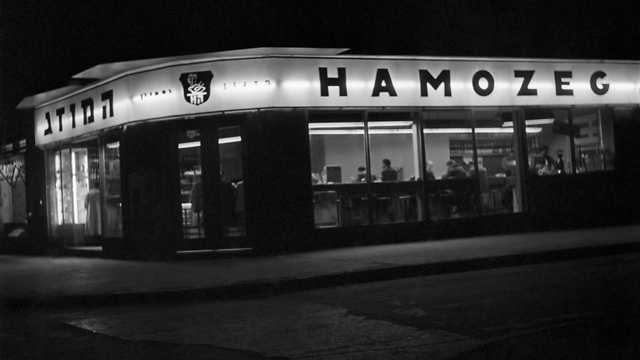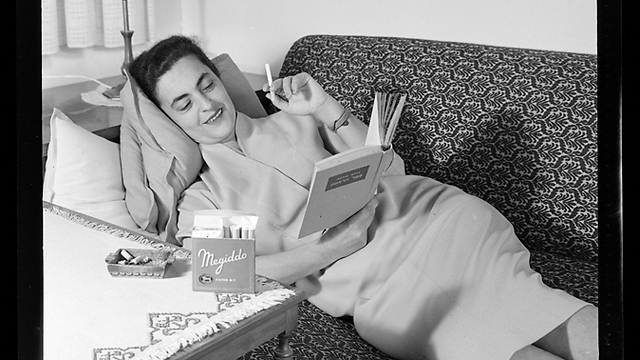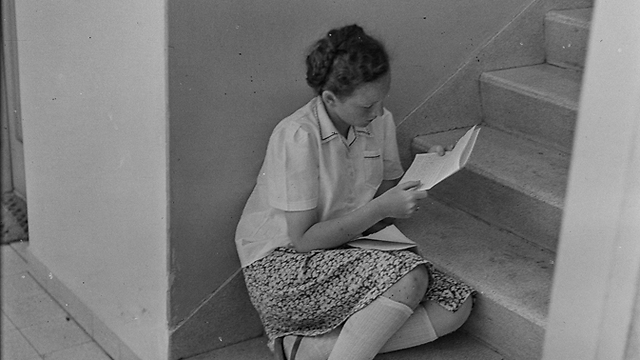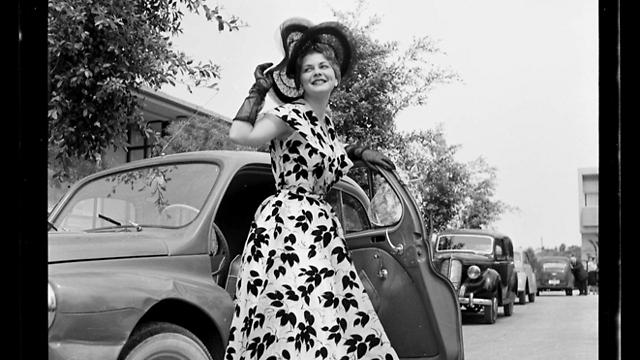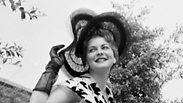
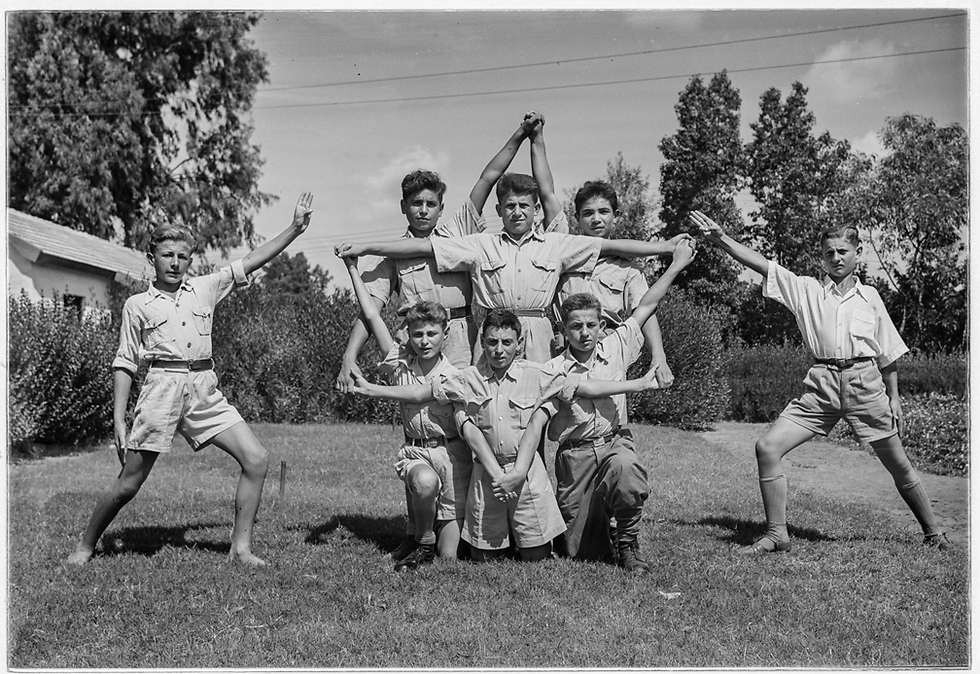
Books, khaki shorts and falafel: The life of young Israelis in the state’s first decade
There was no television, but the radio was very popular; there wasn’t much to eat except for the national dish; people didn’t go on dates and were married at a very young age; between the growing pains and initial exposure to Americanization in the State of Israel’s first years, the young generation made the most of a confusing reality of shortages and new hope.
On the other hand, society was in the initial stages of exposure to Americanization and was developing trends and a character of its own, blending values of populations from a variety of places around the world.
The young people of Israel at the time made the most of a confusing reality of shortages and new hope. With Israel’s recently having celebrated its 69th birthday and based on conversations with experts in the field, here are the stories of a poor and undoubtedly more naïve youth in a country that was just getting started.
Culture, recreation and leisure
“When it comes to the culture of recreation, that varied from one neighborhood to the next,” said professor Orit Rozin, a senior lecturer at Tel Aviv University’s Department of Jewish History, “and it’s also a matter of social class. In the 1950s, there were bourgeois societies—members of the middle class who met on Fridays to listen and dance to Western music from gramophones. Pioneering youth groups had different patterns. They got together to dance, but it was folk dancing. They had reading groups, and they discussed new books and songs.”
Prose and poetry played an important part in leisure. Authors and poets were more important people at the time, and so people (not just young ones) spent time discussing Hebrew literature. Youth always review ideas, as well as each other—on issues related to clothing, self-fulfillment or moving to a kibbutz.
Many of them left their social circles to pursue higher education, following pressure from their parents, and moved to Tel Aviv—where American films arrived first and where the cinemas were packed.
Everyone flocked to the cinemas. Often, it was hard to get tickets to certain movies because of the high demand, but there were always scalpers selling tickets for a profit. Israeli films were hardly produced in the country until the early 1960s, when the country’s film industry began developing.
Those who didn’t go to the cinema hung out on the street. The young ones went out to buy a glass of locally made soda at the corner store or check out display windows. In complete contradiction to today, cafés were frequented predominately by adults.
There was no television at the time, but lots of people had radios. Those who didn’t went to neighbors’ houses to listen, thanks to the importance of good relations with the community.
Community activity was an important thing, both for adults and for the younger generation. Belonging to a youth group helped reduce feelings of loneliness and exclusion and facilitated a social life.
Work or school?
In the 1950s, high school wasn’t funded by the state. Those who enrolled had the money and the means to do so. Others started working at the early age of 14.
Due to the mass immigration at the beginning of the decade, poor families preferred to send their children to work rather than provide them with an education. Waiting tables was a serious profession reserved for adults. The youth worked as salespeople, switchboard operators and newspaper sellers. Others trained in manual labor like metalworking.
“The situation was slightly more similar to India than to Israel today,” said Rozin. “Children carrying baskets in the market, working in the morning and studying in the afternoon. The gaps between the children of Tel Aviv and elsewhere were very big. Laws were enacted in the 1950s to regulate child labor and apprenticeship. There were many laws protecting children in terms of labor.
“Waking up every morning and sending the child to school was considered a Western practice. It all depended on the immigrants’ socioeconomic background and where they came from. It was clear that families from Baghdad or Basra would send their children to school, while families from non-central communities or villages in the East would raise illiterate children.
“The Yemenite community is a more unusual case in which the girls didn’t learn to read or write. It was a small group, which did not reflect the entire group of immigrants, but there was great economic distress and very little assistance. It was more important for the parents to send their child to work.”
Food
As it was a period of austerity, there wasn’t much to eat. Restaurants didn’t function as a center of recreation, and people didn’t go out to eat in the evenings. Restaurants provided lunch to people who didn’t go home during their workday or to single people who couldn’t cook. Their role was purely practical. Street stands offered hot corn on the cob, and Tel Aviv also had places that sold hot dogs. Pizza was nowhere to be found, and steakhouses arrived only later.
In general, meat was a luxury. People rarely ate meat for lunch and dinner in the same day. Cafés served coffee, tea and cake. There were ice cream stands on the street, but the variety of flavors was limited. The most accessible national food was falafel. It wasn’t hummus at this stage, and there was a clear reason for that.
“In general, Israel’s Jews were introduced to hummus in the 1950s, although there were those who were familiar with it earlier,” said Dr. Dafna Hirsch of the Department of Sociology, Political Science and Communication at the Open University of Israel, who has researched the issue.
“It’s hard to answer the question of how ‘the rest of the population’ saw hummus, because there are always differences in different groups’ attitude to types of food,” she explained, “but I can say that the young ones were the first to take a liking to dishes like falafel and hummus. In the early stage, they were considered as harmful and filthy dishes which one should stay away from, and that made them more tempting, of course. In the 1940s, the Tel Aviv Municipality waged an all-out war on falafel sellers, who used to offer the food near schools.”
In the 1950s, there were already Mizrahi restaurants in Israel owned by immigrants from Arab countries, which served hummus and shish kebab. In the young country, which was dominated by immigrants from Europe, these restaurants were seen as dirty and noisy places. The hummus restaurants’ clientele was comprised of men, mostly those who worked far from home.
“Falafel was considered a ‘national dish’ way before hummus,” said Hirsch. “The ‘Falafel Song’ was written in 1957, although it doesn’t refer to it as a national dish. We should make a distinction between popularity and the definition of a certain dish as a national dish.
“From the early 1950s, the food industry began producing canned hummus and falafel powder, explicitly defining them as national dishes as part of its marketing efforts. But at least until the 1980s, falafel—rather than hummus—was considered the Israeli national dish. It may be because it was popular among the Jewish public way before hummus—in as early as the 1930s. I assume it has to do with the fact that it was often sold by Mizrahi Jews, who learned how to make it from the Arabs.
“In Tel Aviv, for example, in the British Mandate era, there were already quite a few men who were selling falafel from a street cart or stand—both Arabs and Jews. Hummus began receiving its proper place and status towards the end of the 1950s.”
Dating
With the absence of OkCupid, Tinder and other applications, the young citizens of Israel did the impossible and were forced to get acquainted organically. Most of the meet-cutes took place inside a framework, like at school, in the army, in a youth movement or in a kibbutz. The word “dating” did not exist.
As a matter of fact, the concept of going out on a date was quite unclear at the time; “date,” now a crucial part of the Hebrew lexicon, was still a foreign term. A boy invited a girl to the cinema, and after a while they defined themselves as “going steady.”
In more serious cases (like a single 25-year-old woman!), a matchmaker’s help was required. In many cases, the mother would go behind her daughter’s back. The less attractive ones turned to newspaper ads.
The overwhelming majority of young Israelis got married at a young age. Homosexuality was forbidden, and anyone suspected of being gay was socially ostracized.
The parents’ homes were small, and their children who went to university left them in for student dorms, also so that they would have a place for sexual encounters. Not that there were many dorms, as there were not that many universities at the time.
Tel Aviv and Bar-Ilan universities didn’t exist yet, so student life was centered at the Hebrew University in Jerusalem. The Technion in Haifa already existed—it was the first university in Israel—but there people were busier studying than hooking up—or so people thought.
Alcohol and drugs
It’s hard to define the young Israelis of those days as hard drinkers, especially compared to today’s drinking culture. There were popular bars, but they were considered gloomy, and so was their location.
Decent people didn’t go to bars. Bohemians sat there a lot, actually. It’s not that there was no liking for beer, but it mostly depended on a person’s descent. Immigrants from Germany liked the beverage, and drinking it at home wasn’t considered unusual.
As for drug consumption habits, that was a slightly different story. “Until 1948, hashish dealing and consumption were limited to the Arab Palestinian community,” explained professor Haggai Ram, a historian at Ben-Gurion University’s Department of Middle East Studies.
“Unlike the Jewish population, all members of the new Yishuv who arrived from Europe stayed away from it, mostly because the knowledge on cannabis that they had been exposed to described hashish as an Arab oriental substance that should be avoided, just like white Americans at the exact same time stayed away from marijuana and cannabis because it was associated with minorities like Mexicans and black people.
“In other words, members of the middle class tried to stay away from any Arab characteristic. Moreover, experts believed at the time—whether in Palestine or in other areas like the British Empire—that cannabis had a direct link to violence, madness and crime. So the Jews of Palestine/the Land of Israel made sure to stay away from it.”
Drug dens (which could have also been regular cafés, but were described that way in the press, as it was still considered indecent) were owned by Arabs. Israel’s Arab citizens smoked in the mixed cities of Jaffa and Haifa together with a small number of death camp survivors, who likely turned to drugs following failed treatment.
The situation changed after the state’s establishment upon the arrival of the waves of immigration from Arab countries.
“Jews came here from Arab countries and found out that they were criminals because hashish had always been an inseparable part of their leisure and gastronomic culture,” said Ram. “It wasn’t an epidemic or a mass phenomenon. But even the government in Israel used it as an axe to grind, to create a separation between Jews of European descent and Jews of Mizrahi descent.
“Basically, through hashish, they criminalized … the Mizrahi Jews. The assumption was that it contributed to their laziness and to their insanity, and it was essentially used to reject any expression of dissatisfaction and protest on the immigrants’ part against discrimination and the way they were being treated.”
Openness to hashish arrived only in the 1960s with the beatniks who came to Israel from the United States and Europe and encouraged Israelis to consume the brown substance. Once again, the Tel Aviv bohemia was among the first to join the trend.
In the 1950s, cannabis was considered a hard drug, just like cocaine, morphine or heroin. These drugs were also attainable in Israel of the 1950s, arriving from Turkey, Iran and sometimes Egypt
Pets
There were few pets at the time, but they did exist. Cats were not particularly popular household pet at the time, but dogs were. In fact, having a dog was considered part of Hebrew culture in the nascent state, and the British were fond of them too.
Literature
The public libraries were very popular, offering books in a variety of languages, but mainly in German, English and Russian. At this stage, many Israelis didn’t speak very good Hebrew yet, and when they had finally learned the language, another wave of immigration would arrive.
Classic literature, like Graham Greene and Ernest Hemingway, was translated. More popular literature included comic books and mainly magazines. Cheap paperbacks included westerns, Tarzan and pornographic Stalag fiction.
“Youth and people at military enlistment age were the target audience of all these books,” said Hemi Sheinblat, a researcher of Americanization processes in Israeli culture in the late 1950s and 1960s. “They were read a lot, sold in newspaper stands, and every book was passed from hand to hand until it was worn out.
“It was mostly a business of publishers, not writers. They hired young people to write these books based on very schematic models, through films they watched that were very popular and through magazines. Pulp fiction from Europe was translated.
“The cowboy figure and Tarzan underwent an adaptation. The American ethos of an individual working to serve the public matched the dominant ethos of Israeliness in a way. The books were a very urban phenomenon that spread to other areas, too.”
Housing
Similar to today, there was a housing crisis. People would rent a room from a family as subtenants. The homes of deported Palestinians were destroyed during the war. The crisis lasted until the late 1950s.
Fashion
There were two main styles: bourgeois and simple. Members of the Labor Movement wore khaki shorts and a white shirt. The middle class wore the finest fashions Europe had to offer. Fashion magazines arrived in Israel, and local girls learned how to dress. The problem was austerity, which was why men and women had very few clothes in their closets.
There was a discrepancy between people’s need to look modest and their need to look good when they left the house. Some believed it was more important to dress up and look good than to eat well because while appearance was important—no one knew what they ate at home.
Men had separate suits for weekdays and for Shabbat. Girls who were members of youth groups dressed according to the social code: short pants with bare legs. In 1964, Christian Dior announced the New Look, but in poor and modest Israel people still wore suits from the 1940s because that’s all they had. On the other hand, Israel exported clothes, such as knitwear, furs and swimsuits.
The clean and organized look was prevalent, and elderly people weren’t very fashionable at that point in time. Moustaches, on the other hand, were welcome.
The pictures in this story are from The PhotoHouse’s archive .















